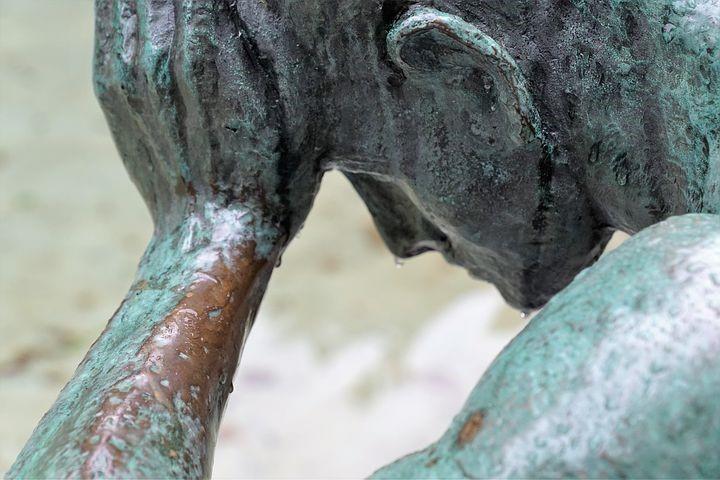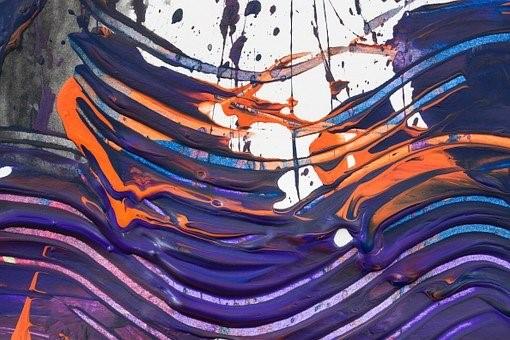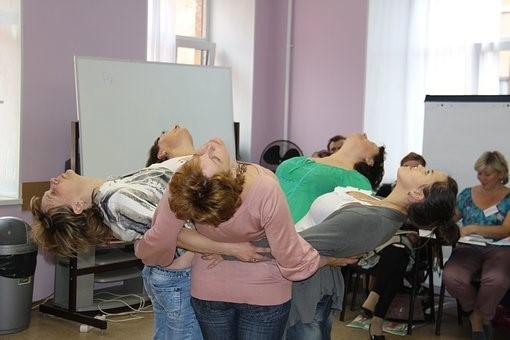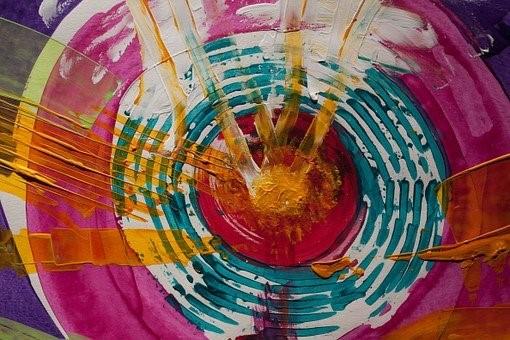It is tough to express one’s deepest emotions, especially when in constant agony because of anxiety or depression. But this is where art comes to your rescue!
Whether it is painting, dancing, taking pictures, or writing a story, every form of art can help you express yourself. Not only this but creative endeavors can also alleviate your negative emotions.
Since art plays an integral role in improving mental health, the notion of art therapy is gaining immense popularity.
Although people have always been using art as therapy, the term ‘art therapy’ has many people confused. So naturally, many individuals wonder, “How does art help mental health?”
Are you also curious to know how art is linked to your mental? Read on, for we have all the answers here!


How Does Art Influence Mental Health?
For starters, countless studies prove that creative or art therapy activities can bolster your positive moods and self-esteem.
Skill-based activities like woodwork, needlework, or knitting demand a lot of focus and energy. Since meditation and mindfulness function similarly, you can experience a meditative state while doing a creative task.
Thus, indulging in these artistic activities over time can drive your mind away from worrisome thoughts.
It has been estimated that one-quarter of the world populace is either dealing with mental health challenges or is severely at risk of developing one.
In addition, discrimination, wars, natural disasters, and post-pandemic illnesses have only exacerbated the situation. In dire situations like this, words seem insufficient.
So people turn to their imagination as an adaptive tool to solve problems or tolerate their repercussions.
It is no surprise that in the last two years, an increasing number of people are making Tik-Tok videos, brushing up their baking skills, or spending time designing their homes.
These are creative coping mechanisms to manage the onset of psychological challenges triggered by prolonged lockdowns.
The Origin of Art Therapy
The term ‘art therapy’ was coined in the 20th century, demonstrating its recency.
Since mental trauma is understood as an impairment of the brain’s speech centers, earlier therapists encouraged patients to express themselves non-verbally.
These exercises were primarily practiced on veterans from World War I and II, as they and their families were going through severe post-traumatic stress.
Many clinicians still offer art therapy in their practice today. You can use an online tool like Rula to connect with one that suits your needs.

Art is an Integral Therapy Tool
Unlike young children who would take any opportunity to sing, dance, and draw, adults are ambivalent about artistic adventures. Nevertheless, their dismissal stems partly from their inability and insecurity.
Growing up, the joy and freedom of young age are frequently replaced by self-consciousness and fear of judgment from others.
Instead of becoming active creators, most adults become passive viewers of art. Consequently, they lose the personal advantages offered by artistic self-expression.
Art therapists help their patients reconnect with themselves by re-kindling their creative side. Besides allowing people to channel their pent-up emotions, it also helps them grapple with future challenges in life.
You also have the option to do art therapy with a group. Although you might feel shy at first, you will eventually feel sufficiently comfortable to develop as many patterns as you desire and as weird as you imagine them to be.
Consequently, the whole practice will make you feel mentally and emotionally emancipated.
Perks of Art Therapy
Now that you have understood the connection of art with mental well-being, it is time to delve into some of its unique perks.
It Boosts Creativity
Creative expression is undoubtedly the foremost health benefit provided by art therapy. By showcasing your creative side, you get an outlet to utilize your imaginative skills.
This sense of personal freedom gives birth to many other health benefits. For instance, it destresses your mind and enlarges constricted blood capillaries. On top of all this, it helps alleviate depression and anxiety.

It Destresses Mind
As stated above, mental dilemmas like depression and anxiety require you to channel your distress. By immersing yourself in creative activities, you can prevent upsetting thoughts from encroaching your mind.
It Improves Your Cognitive Abilities
When it comes to memory, learning, and problem-solving situations, the cognitive parts of your brain get stimulated.
Since art also has its share of significant challenges and confusions, it requires you to think in a similar pattern. Hence, practicing art can sharpen your cognitive abilities.
Furthermore, it can help you apply creative methods to sort day-to-day life problems.
It Provides a Sense of Achievement
Unless you are a sportsperson or a public figure, most things you do remain unnoticed. Over time, this manifests into a hunger for validation.
Since art allows you to exhibit your hidden talent, it will enable others to see and appraise your skills, too. Understandably, this also boosts your self-esteem and amplifies positive emotions.
It Broadens Your Social Connection
Art connects people with similar interests. For instance, some people enjoy a particular genre of music, preferring to watch the same kind of movies, sharing other similar passions.
So, irrespective of the artistic activity you are participating in, you are bound to connect with people with similar interests.
This will subsequently help you make new bonds, discussing the topics you mutually find captivating.
It is Not the Same as a Regular Art Class
The general perception of art therapy is the biggest hitch in its progress. People believe taking it will be no different from taking an art class. Alas, this cannot be farther from the truth.
A standard art class is primarily focused on imparting different art techniques. In contrast, art therapy involves letting out your negative emotions and developing tools to manage them constructively.
It Does Not Force You to Be Artistic
Contrary to popular misconception, art therapy is not reserved for artistic individuals. So whether you have any talent or not, you are qualified to take art therapy sessions.
Plus, there is no age limit for these sessions. Hence, if the idea of playing with colors and making random doodles appeals to you, do not let any external or internal barrier come in your way of receiving art therapy.
It is a Great Time Pass
Having quality fun does wonders for one’s mental health. In addition to helping you explore your creative side, art also allows you to enjoy your time.
Furthermore, when you are done creating an art piece, you feel an immense sense of satisfaction.
More than anything, it keeps you busy. So if boredom gets you upset, art therapy is your best bet because it will replace your depressing thoughts with creative ideas.
It Helps You Create Memories
Although there are many compelling reasons why you should opt for art therapy, making memories is doubtlessly the greatest.
Therefore, art therapy is especially beneficial for people with Alzheimer’s disease.
Your brain's pleasure and growth centers are stimulated whenever you create something visually presentable. Consequently, it makes you feel even more connected and productive.
It Alleviates Pain
Chronic health conditions are often accompanied by anxiety, depression, and sharp pangs of pain. But remarkably, art has the potential to alleviate these symptoms and even help with the actual physiological disease.
For a start, art distracts patients from their ailments, focusing their attention on playing with catchy colors and creating unique designs.
Furthermore, it gives them a sense of individuality that the illness might have harmed. Not to mention it allows patients to express whatever is going through their minds, too.
It Can Be Done in Any Setting
Art therapy services are not confined to studios or art halls. Whether it is an inpatient office, school, health care center, or any community organization, you can engage in it wherever you are.
What Are the Types of Art Therapies?
Although there are many types of art therapies, the following are the most common:
Dance Therapy
As the name implies, dance therapy involves an array of different physical movements. When deeply immersed in rhythmic physical gestures, your mind naturally forgets all its negative emotions.
Writing Therapy
This is another practical art therapy approach, where people get close to their most profound emotions by expressing them in prose.
Besides helping patients put their feelings out, writing also allows them to explore their most stressful thoughts.
To accomplish this, patients may be required to write about their life experiences as poetry, fiction, or any other creative medium.
Music Therapy
This type of art therapy revolves around creating and listening to music. Additionally, by uplifting your mood, music therapy uplifts also eases anxiety and stimulates a gush of endorphins.
Art Therapy
Art therapy is perhaps the most conventional approach, wherein people experiment with visual arts, like painting, sculpting, and sketching.
It helps people work through their complex emotions and make peace with the crises at hand without overthinking their skills.
Many believe that art therapies make you indifferent and immune to your current problem. However, that is far from the case.
Instead, art therapies simply ease your worries and help you cope with your pain.

Ready to Opt for Art Therapy?
Given the countless benefits of art therapy, it has become a staple hobby in many people’s lives. We hope reading this article has helped you understand why expressing your creativity is important and how art therapy can prevent you from getting upset.
Art therapy clinicians create an environment that allows people to express their deepest emotions without worrying about their artistic skills.
In other words, art therapy sessions help emotionally exhausted people focus on the art process rather than its result.
Recognizing the significance of art on mental health, Superprof offers various online art classes in the USA.
Therefore, trust our art tutors to get you started, whether you want to learn how to dance, paint, act, or even sew.















